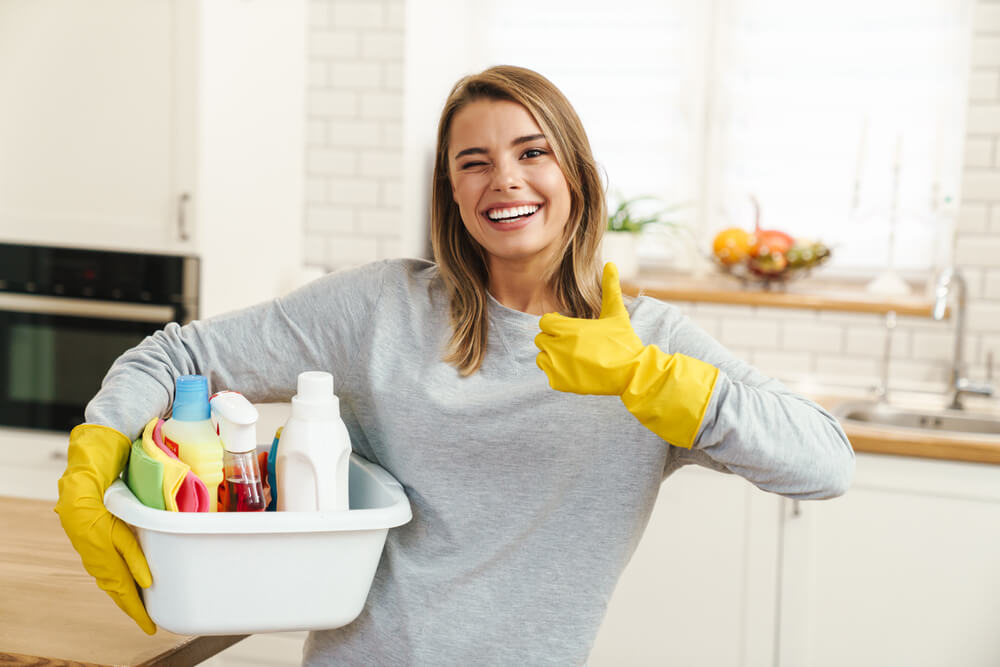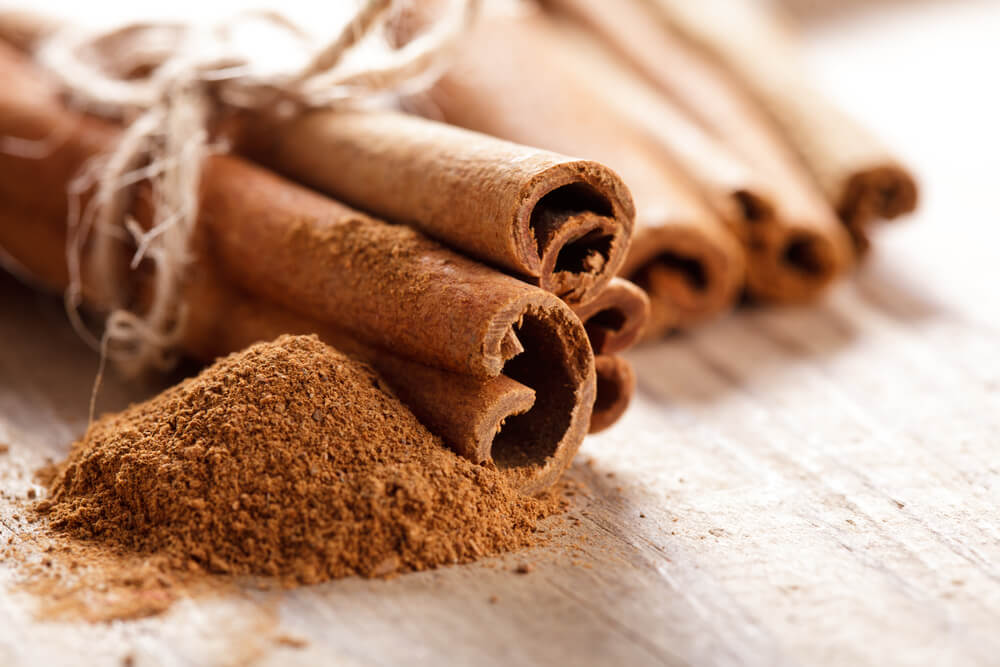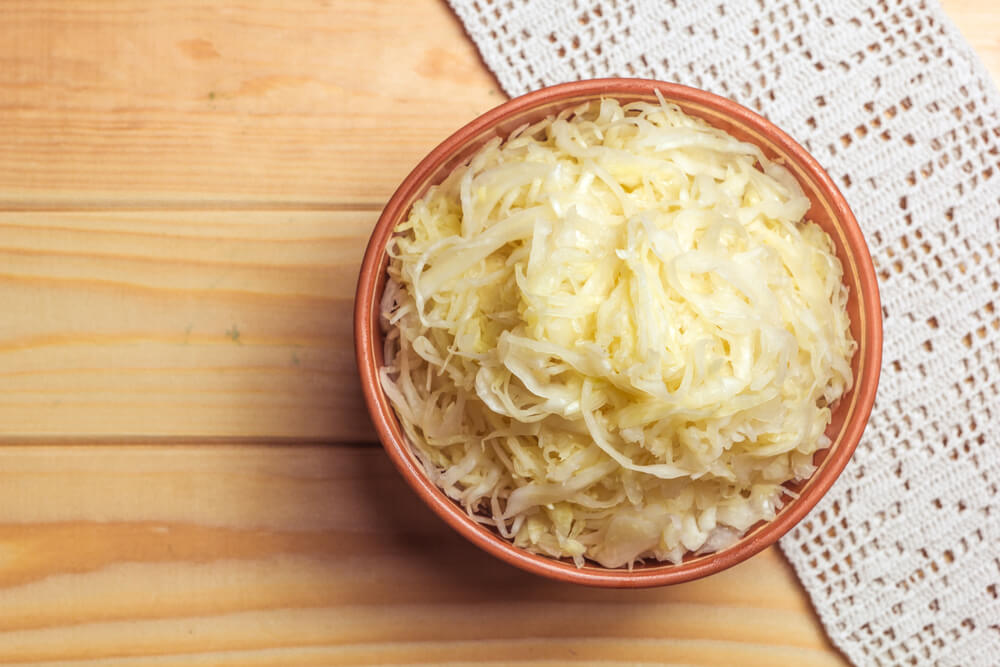Tips for the hostess: the perfect cleaning schedule to help you remember nothing
'29.11.2020'
Source: Life hacker
Even when cleaning regularly, we still miss some corners of the house. For some reason we neglect some, but we simply forget about some, says “Life hacker".

Daily
Kitchen towels
How. Machine wash according to the instructions.
How Come. Kitchen towels get dirty very quickly because we use them many times a day. This is especially true if you have a large family. Towels may look clean, but they contain a lot of bacteria.
Crockery
How. Before going to bed, wash any accumulated dishes or simply put them in the dishwasher.
How Come. Leaving dirty dishes and pans overnight can make them harder to clean in the morning. In addition, dried food particles serve as a breeding ground for bacteria and cause unpleasant odors.
Kitchen table
How. Wipe down the table with a disinfectant. By the way, do not wipe all kitchen surfaces with one rag: this way you only spread germs throughout the kitchen.
How Come. We just don't put on the kitchen table: keys, bags, money, not to mention the products brought from the store. Bacteria from all of these items can enter food.
Pet bowls
How. Most bowls are dishwasher safe. Just be sure to rinse the dishes thoroughly so that no traces of detergent remain on it.
How Come. Unwashed water and food bowls attract a variety of pests and can cause health problems for your pets.
Once a week
Kitchen cabinets
How. Wipe clean with a cloth. Pay particular attention to areas where food particles may fall.
How Come. Dust and grease from cooking collects on kitchen cabinet doors. There may also be pathogenic microbes.
Toilet
How. Pour 100 ml of white vinegar or 50 ml of chlorine bleach into the toilet (as long as you never mix them) and let sit for a few minutes. Brush everything inside and then drain the water.
If your toilet has limescale and rust on it, let the vinegar or bleach sit for an hour. Walk outside with a special disinfectant.
How Come. Chances are, you yourself know that there are a lot of bacteria in the toilet.
Bath
How. After each use, simply rinse the tub with water. But once a week you need to wash more and more thoroughly. Use gentle cleaners to avoid damaging the enamel.
How Come. Bacteria accumulate in the bath, and the enamel darkens from dirt, grease and hard water.
Shower cabin
How. Wash the walls of the cabin with warm water and treat with a special antibacterial spray.
How Come. This will protect the walls from discoloration, limescale and mildew.
Food waste disposer
How. Add ice cubes, frozen lemon juice, or vinegar to the cleaner.
How Come. Food particles and bacteria accumulate on the internal blades of the chopper, and the ice will help remove them.
Cushioned furniture
How. Vacuum the furniture itself, the pillows, and don't forget to vacuum under the armchairs and sofas.
How Come. Dust and pet hair accumulate especially quickly on upholstered furniture. Remember to get rid of it, especially if someone in your family has allergies.
Trash can
How. Wash with warm water and soap or disinfectant solution.
How Come. Food particles and bacteria can accumulate in the bin.
On the subject: 9 signs that you don’t know how to clean
Once in two weeks
Bathroom curtain
How. Vacuum gently with the brush attachment. Hand wash or machine wash depending on material.
How Come. The shower curtain absorbs odors and attracts dust.
Switches and door handles
How. Wipe clean with a cloth.
How Come. A lot of germs collect on knobs and switches every day.
Sleeping place for pets
How. Vacuum and wash separately from your clothes. If you just want to get rid of the bad smell, sprinkle baking soda on the bed and let it sit for 15 minutes. Then vacuum up the baking soda.
How Come. Your pet's bedding collects hair, dandruff, and dirt.
Bath mat
How. Wash with hot water in a washing machine.
How Come. Mold can easily build up on the rug, especially if it dries poorly. In addition, germs and dirt accumulate there.
Microwave
How. If your oven has a turntable, remove it and wash it in warm soapy water or in the dishwasher. To clean the inside of the microwave, place a glass of water with lemon slices in it and heat for 3-4 minutes.
Then wipe off the softened dirt with a damp sponge. Add baking soda to the water to avoid unpleasant odors. Then dry everything thoroughly with a dry cloth.
How Come. After each use, food particles remain in the microwave.
Once a month
Vacuums
How. Change the bag, clean the filters and wipe the inside of the vacuum cleaner.
How Come. Regular cleaning of the vacuum cleaner will increase cleaning efficiency.
Dishwasher
How. Remove the filter, soak it in soapy water, then rinse thoroughly. Put the filter back in, place a glass of vinegar on the bottom of the machine and run a full cycle without dishes. Leave the baking soda on the bottom of the car overnight.
Start the cycle again in the morning without dishes.
How Come. Over time, dirt, grease and food particles build up in the dishwasher. From this, an unpleasant smell and plaque appears on the dishes.
Kids toys
How. Machine wash your soft toys once a month on a delicate wash cycle. Use a sticky roller to scoop up dust between washes.
How Come. Bacteria quickly accumulate on toys, and children still lack a strong immune system.
Coffee maker
How. Pour a 1: 1 mixture of water and white vinegar into the water tank and turn on the coffee maker. When several cups have been drained, turn off the appliance and leave for an hour. Then turn it back on and run a few cycles with only water.
How Come. This will help remove the limescale.
Draining sinks and bathtubs
How. Place ½ cup of baking soda in the drain and immediately add the same amount of vinegar. Cover the hole with a rubber glove, let the mixture work for 10-15 minutes, and then turn on the hot water.
How Come. Grease and fine debris accumulating on the pipe walls causes unpleasant odors and blockages.
Once in two months
Behind and under the washing machine
How. Gently vacuum the floor behind and under the washing machine, especially around the power cord.
How Come. Dust and debris build up under the washing machine, increasing the risk of fire.
Fun
How. Spray each fan blade with white vinegar, then wipe it down with a rag.
How Come. Dust collects on the surface of the blades and spreads throughout the house when the fan is running. This can exacerbate allergies and respiratory diseases.
Jalousie
How. Vacuum. If the blinds are completely dirty, remove them and wash them closed with warm water using a soft brush. Turn over and repeat on the other side. Then open and leave to dry.
How Come. A lot of dust accumulates on them, which is especially harmful for allergy sufferers.
Once a quarter
extract
How. Remove the filter from the hood and rinse it in hot soapy water, then rinse thoroughly. It is better not to use the dishwasher.
How Come. Dust, grease and food particles accumulate in the filter and hinder the operation of the hood.
Refrigerator
How. Soak drawers and shelves in warm soapy water, and wipe the inside of the refrigerator with a sponge. It is best to use plain baking soda to remove stains rather than disinfectants.
How Come. This will reduce the risk of food poisoning and get rid of accumulated bacteria.
Books
How. Remove books from the shelves, dust them thoroughly, and fan them quickly to shake dust off the pages. If storing books in a pile, swap them around to prevent the covers from warping.
How Come. Paper pages lose color and deteriorate, and mold can also develop on them.
Under the flower pots
How. Move the pots to a different location once a quarter so that the windowsill or floor underneath does not burn out. And of course, don't forget to wipe down the area where your flowers stand at least once a week.
How Come. If the pots are always in one place, the floor underneath may become darker than other areas due to the uneven distribution of light.
Stove (hob)
How. Remove all handles and wash them in hot soapy water, wash the panel behind (under) them thoroughly and dry with a dry cloth. If the handles are not removable, wipe them with a well-wrung out sponge and cleaning agent, and in hard-to-reach places, use a toothpick.
By the way, the working surface of the stove should be regularly wiped with a special cleaning agent or soda and lemon juice (1: 1).
How Come. Dust and food debris not only spoil the view, but also serve as a breeding ground for bacteria.
Oven
How. Treat the burnt spots with baking soda, and then sprinkle with vinegar to start the reaction. Wash the wire rack with soap and water.
To clean the glass door, use a glass cleaner or a 1: 1 mixture of water and vinegar. Soak a rag or paper towel in the mixture, wring it out and place on the glass with the door open. Leave it on for half an hour to soften the dirt. Wash with water and dry with paper towels or a lint-free cloth.
How Come. Food particles remaining in the oven smoke when heated.
On the subject: 10 cleaning errors, from which the house gets even dirtier
Twice a year
Pillows and blankets
How. Wash by hand or in a washing machine on the delicate cycle and air dry.
How Come. This is especially important for those with allergies.
Mattress
How. Turn the mattress, while alternating turns from one side to the other and turns "head-legs".
How Come. This will prevent deformation of the mattress.
Fixtures
How. Disconnect power before removing any part of the lamp. Wipe gently with a damp cloth, maybe with soap.
How Come. Dust and dirt accumulated on luminaires can dim light from bulbs by 30%.
Behind and under the refrigerator
How. Unplug the refrigerator from the mains, remove the protective grill at the back, clean it and gently wipe the condenser and fan. Vacuum the wall behind the refrigerator. Wipe the sides of the appliance with a cloth, the floor underneath.
How Come. Dust on the floor, mixing with moisture, can damage the floor covering. And excess dust on the walls increases the risk of fire. Plus, cleaning will greatly increase the efficiency of the cooling system, which will extend the life of your refrigerator and save you money.
Watering can
How. Remove the watering can and soak it in white vinegar, then rinse thoroughly.
How Come. Over time, the watering can becomes clogged, and because of this, the water pressure deteriorates.
Windows
How. Run the sticky roller on both sides to collect dust. If there is a lot of dirt, wash with water and a brush. Stir 2 teaspoons of vinegar in 3,5 liters of water, pour into a spray bottle and wash the windows with this mixture, wiping thoroughly with a microfiber cloth.
How Come. Dirty windows let in less light, and dust can cause various respiratory diseases.
Once a year
Carpets
How. Wash and dry the carpet thoroughly. Also remember to turn the carpet over so that it fades evenly.
How Come. Carpets collect a lot of dust and dirt, especially if you have pets.
Chimney
How. Hire a specialist.
How Come. A blocked chimney can cause a fire.
Водонагреватель
How. To flush the water heater, turn it off, shut off the cold water supply. Open the hot tap to relieve pressure inside the tank. Then connect the hose to the nozzle and drain all the water from the heater.
How Come. Regular flushing will help extend the life of your water heater and save energy costs.
Washing machine
How. Pour 100 ml of chlorine bleach into the drum, or add 100 g of citric acid and start washing without laundry at the maximum temperature. Wash the detergent container by hand.
How Come. The drum of a washing machine becomes easily dirty and, over time, an unpleasant odor may appear in it.







